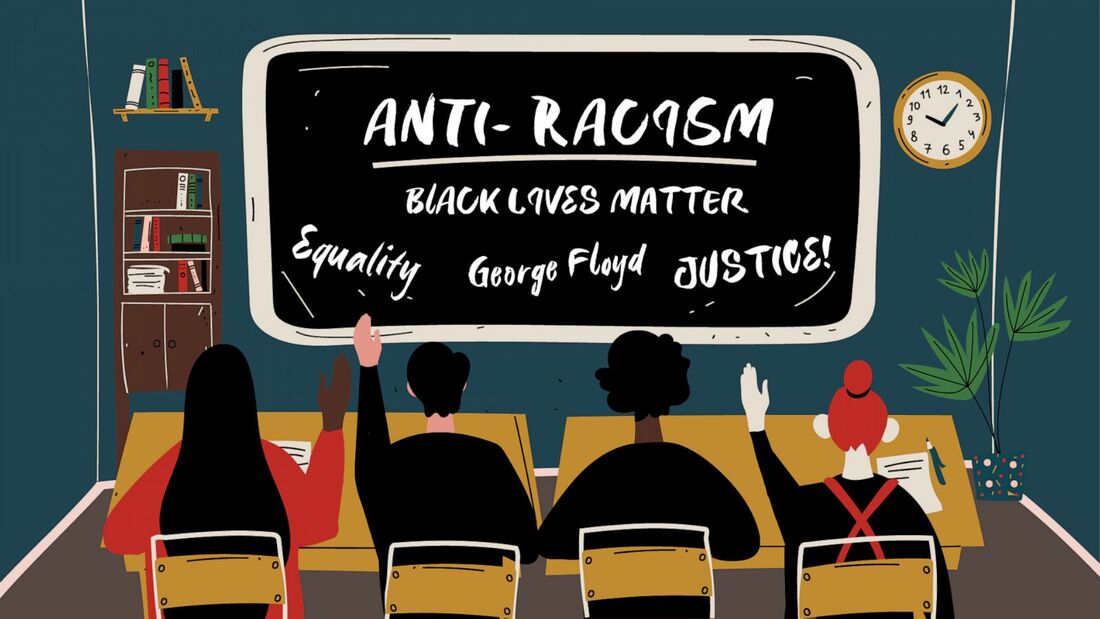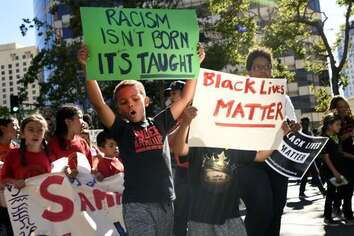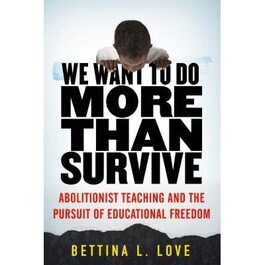The Black Lives Matter movement inspired many to acknowledge police brutality, racism, anti Blackness, white supremacy and its impacts for the first time both in and out of the classroom, whether virtual or in person. This is only the beginning of actions necessary for change that is long overdue. -- Judith Hernandez, 11th
Daisha Wiliams, a sophmore in the Literary Arts pathway explains that when these conversations occur in her classes she notices that, “...usually black and brown kids are the only ones who are really willing to talk about it and because we tend to be a smaller percentage of the class it’s usually a really brief conversation.” At OSA, the demographics are 37% Caucasian; 13% Multi-Ethnic; 18% African American; 5% Asian; 15% Hispanic/Latino; 4% American Indian; 1% Pacific Islander; 9% Unknown/Decline to State.
In comparison, Simon Bhuller-Riordan, a junior in the Theater pathway states, “...mostly those conversations have been dominated by white students and I don't think they do it on purpose because also the teachers don’t know how to facilitate those conversations. They wanna bring it up but then don’t really know how to facilitate it in a healthy and positive way so that everyone can get their perspective listened to.”
Corinne DeLuca an algebra, pre-calculus, and calculus teacher describes some of the feelings of uncertainty teachers often face when trying to have such conversations in class. “I am afraid of having these conversations because I don't want to offend anyone and I want to listen,” she said. While many teachers have had diversity and inclusion training, bringing up conversations like these can still be a struggle.
Additionally to uncertainty, conversations on race and racism can lead to feelings of discomfort, fear, guilt, or even anger. This can result in unhealthy and harmful conversations, or no conversation at all, leaving a negative impact on students. Because of this, it is important to understand the root causes of these feelings to move towards anti racism and discussions that equip students with tools and motivation to better combat the injustices around them, including in their own classrooms. Kamaria Williams, freshman in the Literary Arts pathway further explains that although these conversations can be hard, they are still important because, “If we ever wanna do anything about the injustices, we have to be aware of what’s going on in our society. That way we can face the issue head on and make our voices heard.”
While discussing these topics and bringing awareness to them is important, people's allyship and activism cannot end there. In her recent book We Want to Do More Than Survive: Abolitionist Teaching and the Pursuit of Educational Freedom, Bettina Love, professor, author, and member of the Abolitionist Teaching Network, emphasizes what it means to be an anti-racist educator. Love writes, “Anti Racist teaching is not just about acknowledging that racism exists but about consciously committing to the struggle of fighting for racial justice… They must criticize the systems that perpetuate injustice, such as the educational survival complex, while pushing for equitable communities, schools and classrooms.” Fighting for racial justice is a long process but one that is crucial especially in school, a system that in many ways perpetuates the same racism that continues to take the lives of many. Simply telling students that racism is wrong, is not enough.
This school year, OSA admin hired Candice Wicks, member of Edutainment for Equity, for anti racist and equity training. Their mission is to “...activate allies and empower historically oppressed people to transform their institutions and communities.” With OSA staff, they are doing this through workshops, one on one coaching, and by following their “Anti-Racist initiative which is a 10-Step System for becoming an anti-racist organization.” However, it is important to know that the work towards equitable schools and an anti racist world does not end after 10 steps.
The Black Lives Matter movement inspired many to acknowledge police brutality, racism, anti Blackness, white supremacy and its impacts for the first time both in and out of the classroom, whether virtual or in person. This is only the beginning of actions necessary for change that is long overdue. What actions will you take?





